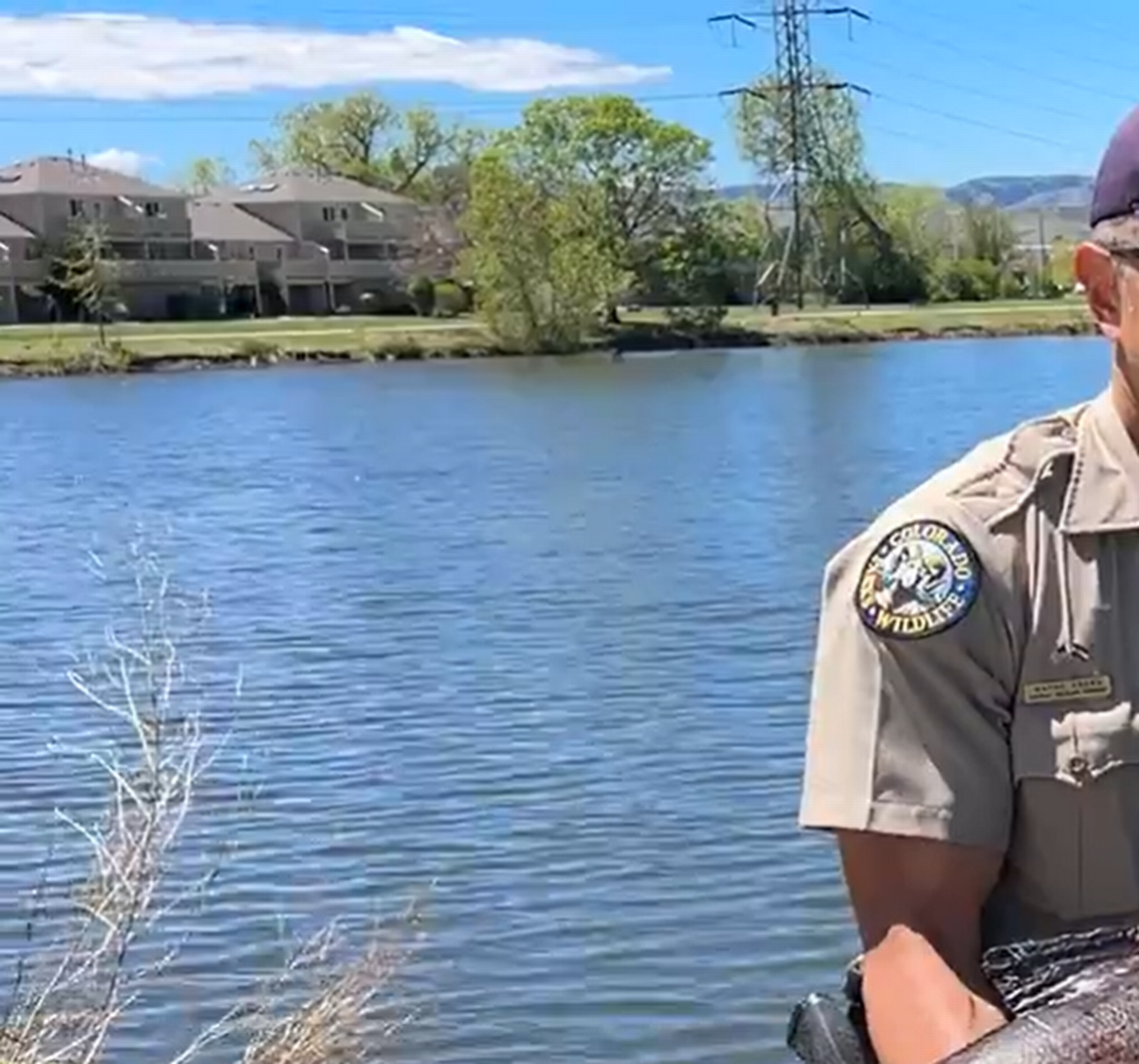Angler’s discovery leads officials to 14 huge invasive fish in CO. See the pond monsters

An angler discovered a huge invasive species while fishing in a Colorado pond, and video shows just how big the monster-size fish are.
Wildlife officials removed more than a dozen 3-foot-long bighead carp from the Jack B Tomlinson Park pond in Arvada, according to a May 13 news release. Arvada is about a 10-mile drive northwest from Denver.
The largest fish weighed in at 46 pounds — about the same weight as several medium-sized dog breeds.
The huge size of the fish is apparent in a video shared May 13 by Colorado Parks and Wildlife Northeast Region on X, formerly known as Twitter.
Eight wildlife officers of various heights stand in a row near the pond holding up the huge fish, which appear to still be alive. The agency did not say what staff did with the fish after removing them from the pond.
Invasive species have to be removed from our waters to ensure overall aquatic health for all wildlife. While all invasive species might not be as big as these carp, nothing should be in our waters that doesn't belong.
And yes, many Jaws jokes were made. pic.twitter.com/jkCNnjfx0G— CPW NE Region (@CPW_NE) May 13, 2024
“Invasive species have to be removed from our waters to ensure overall aquatic health for all wildlife,” the agency said in the post. “While all invasive species might not be as big as these carp, nothing should be in our waters that doesn’t belong. And yes, many Jaws jokes were made.”
Bighead carp are part of the Asian carp family and are not native to Colorado, officials said in the release. They’re big plankton eaters and threaten the overall health of the ecosystem by competing with several native and sport fish species that rely on plankton as a food source.
“Bighead carp are filter feeders and can grow to incredible sizes in both small and large bodies of water,” Robert Walters, the agency’s invasive species program manager, said in the release. “Once established, these fish can outcompete native Colorado species for food and resources.”
Luckily, the fish did not spill over into a neighboring body of water connected to the pond by a culvert, officials said. Staff biologists found the massive fish using electrofishing methods that shoot electricity through the water to stun the fish temporarily.
Staff with the agency also have a good idea of how the fish ended up in the pond in the first place.
Bighead carp were introduced in 1992 as part of a national study to see if the fish could reduce nuisance algae plaguing ponds, officials said. The fish were supposed to be removed after the three-year study in 1995, but some remained.
Luckily, experts don’t believe the fish reproduced during their three decades in the pond.
“The size of the bighead carp removed indicates natural reproduction has most likely not taken place, which was the best case scenario,” Kyle Battige, senior aquatic biologist for the agency’s northeast region, said in the release.
District Wildlife Manager Philip Sorensen thanked the angler who tipped the agency off to the carp’s presence.
“We are grateful when the public reaches out to tell us about invasive species in their neighborhoods,” he said.
The agency plans to check the pond later to make sure it got all the invasive fish, officials said. Anyone who spots suspicious-looking aquatic species in Colorado waters can file a report with the agency.
‘Bucket biologist’ blamed for introducing fish into Utah reservoir. Why that’s illegal
Rare fish species hasn’t been seen in creek for 20 years — until now. See ‘small victory’
Will killing 500,000 owls help similar species? Groups slam ‘reckless’ government plan

